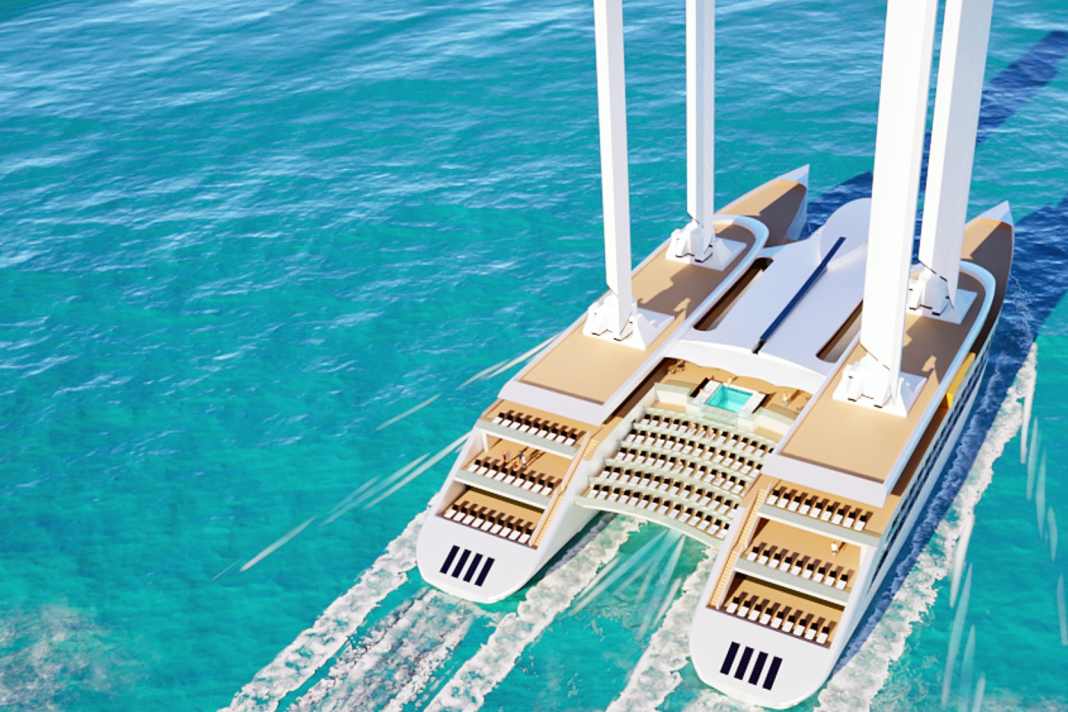


The outstanding design of "Seabreeze" is characterised by one element in particular: Four sails, each 50 metres high and reminiscent of VPLP's Oceanwing system in the visualisations, are designed to capture environmentally friendly wind. These sails are operated via mechanisms located on the deck, more precisely in the six metre high mast bases - everything is a little bigger on a ship of this size. The hotel's energy requirements are met by engines below deck that run on environmentally friendly bio-methanol. These engines can not only support the sail propulsion when necessary, but are also used for manoeuvres.
Further design studies:
Thanks to a battery hybrid drive, it is possible to travel silently. The "Seabreeze" is constructed in such a way that it consists of two hulls, each 18.2 metres wide and connected by an inverted U-shaped structure 18.5 metres long. The command bridge and public areas such as restaurants are located on the central structures of the catamaran. In each of the two hulls there are four decks equipped with double cabins for guests and accommodation for the 155 crew members, as well as a lounge area on the roof.
Sustainability is important, but at the same time, the cruise industry needs to constantly re-imagine itself" (Trond Sigurdsen, Senior Architect and Partner at YSA Design"
"Seabreeze" aims to make environmentally sensitive or difficult-to-access waters accessible to affluent customers. With a draught of just four metres, the ship, which can accommodate up to 200 premium guests, can sail closer to the coasts of many areas than traditional cruise ships.
Another design highlight are the extendable platforms on the sides of the ships. These not only bring passengers close to the water surface when anchoring (or by automatically holding their position), but also allow a view of the seabed through transparent areas and underwater lighting, as if it belonged directly to the ship. This is particularly impressive when the catamaran is over a shipwreck.
